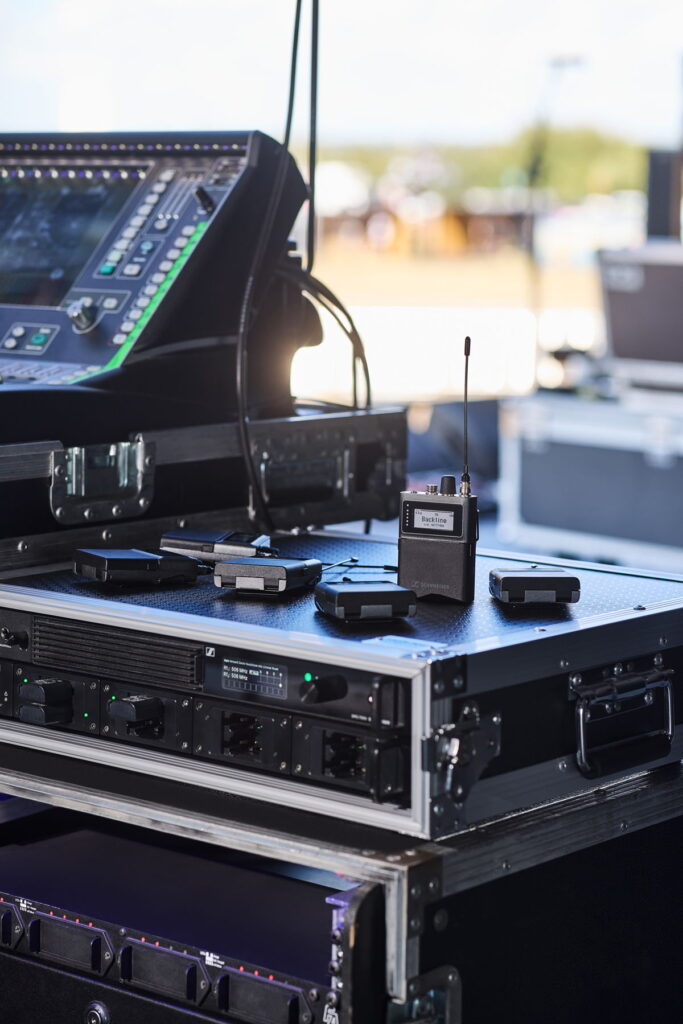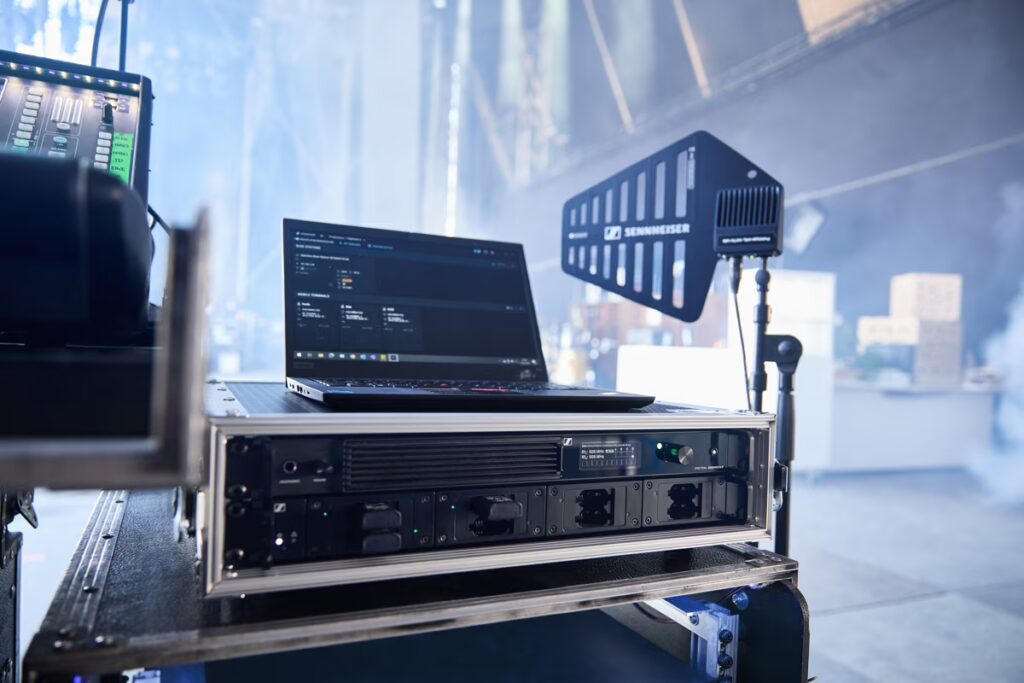Unveiling the world’s first wideband, bidirectional, digital wireless ecosystem
At IBC, Sennheiser ushers in a new era of digital wireless audio transmission with the world’s first bidirectional wideband solution: Spectera. Using the ground-breaking WMAS (Wireless Multichannel Audio Systems) technology, Spectera greatly reduces wireless system complexity, while at the same time considerably increasing capability, enabling time-saving workflows and offering full remote control and monitoring, including permanent spectrum sensing. Spectera features bidirectional bodypacks that manage both digital IEM/IFB and mic/line signals at the same time. The solution is remarkably resistant to RF fading and allows for flexible use of the wideband RF channel, for example for digital IEMs with a latency down to a spectacular 0.7 milliseconds.

The Spectera SEK bodypack handles both mic and IEM audio, plus control data, in the same wideband RF channel
“We are thrilled to see years of technological development and spectrum policy work turn into a digital wireless ecosystem that will solve many of the issues that users of wireless multichannel systems are faced with today,” say co-CEOs Dr Andreas Sennheiser and Daniel Sennheiser. “Our wideband solution will be ideal for large productions, whether in the touring, broadcasting, or theatre fields, or in any other area that requires multichannel audio setups. Spectera satisfies our customers’ chief desires and needs regarding ease of use, operational reliability and flexibility. It offers less hardware, drastically reduced frequency coordination, redundancy, and the flexibility of an ecosystem that grows with your needs.”
Powered by WMAS – The wideband approach
Bidirectional digital wideband transmission addresses many of the typical challenges that users, operators and owners of wireless audio systems experience today. These challenges include overly complex frequency coordination and complicated rack cabling for high channel counts, and the large footprint that a multichannel wireless system still has – in the warehouse, on tour and backstage, both for space and the amount of time required for load-in, load-out and setup.

Bidirectional wideband transmission solves many typical problems of multichannel wireless. For example, large backstage racks with IEM transmitters and microphone receivers can be replaced with a single smart Base Station
Sebastian Georgi and Jan Watermann are the inventors of the specific Sennheiser approach to WMAS. The technology they developed is a proprietary variant of OFDM-TDMA, specifically tailored to reliable multichannel, bidirectional, low-latency communication. They succinctly compare this wideband approach to standard narrowband technology: “Instead of many individual 200 kHz narrowband RF carrier frequencies, we use a single wideband RF channel for audio transmission – bidirectional transmission of audio and control data, to be more exact. In Sennheiser’s approach, the wideband RF channel is a TV channel of 6 or 8 MHz, depending on local regulations. The WMAS system organises its audio links within this channel. Every audio link, be it a mic or an IEM, is assigned specific time slots for transmitting its audio information – for the first time, it is possible to have IEMs and mics in the very same TV channel instead of two channels separated by a guard band. Thanks to the fact that all audio links use the full width of the RF channel when it’s ‘their turn’, RF fading is greatly reduced. It corresponds to 40-fold diversity for an 8 MHz RF channel and 30-fold diversity for a 6 MHz TV channel. Also, the spectral density is low, which makes it easier to reuse frequencies, for example on a larger festival ground, between neighbouring theatres, or in a broadcasting complex.”
Greatly reduced system complexity
One of the most stunning innovations in the Spectera ecosystem is certainly the Base Station, which, in a single rack unit with 32 inputs and 32 outputs, replaces a rack-full of wireless mic receivers and IEM transmitters. An entire production could be accommodated in a single wideband RF channel (6 or 8 MHz). The lower footprint continues to the bodypacks, which handle mic/line and IEM/IFB requirements simultaneously. “Having just one pack is not only a great asset for performers,” says Bernd Neubauer, Spectera product management, “it also makes the work of the sound engineer easier, who has just one type of pack and can, if required, quickly add an IEM to a mic. Warehousing also becomes less complex, with just one Base Station and two frequency variants – UHF and 1G4 – for bodypacks and antennas.”

An entire production with mics and IEMs in a 19” 1U rack space. Below the Spectera Base Station is an L 6000 charging station with charging modules for the BA 70 rechargeable battery pack. Spectera uses the same batteries as Evolution Wireless Digital
The future of wireless pro audio is here – and it’s bidirectional
Spectera represents a total shift in control and monitoring: It doesn’t just offer a back channel, but continuous two-way communication throughout, for truly complete remote control. Via the permanent control data stream, audio settings can be adjusted, IEM and mic levels adapted, RF health and battery status monitored, and much more. AES 256 encryption (AES 256 CTR Mode with >10kYears expiry) for both audio and control data ensures the necessary data privacy.
Also, all units help in continuously sensing the spectrum, meaning they scan for potential interference from other RF sources. With Spectera, it is possible for the first time to see “behind” the RF channel that is actually being used and detect interference.
Excellent audio quality
Spectera delivers signature Sennheiser digital audio quality for mics, instruments and IEMs, employing different application-optimised audio codecs, which are all internally processed with 32-bit-float precision.
